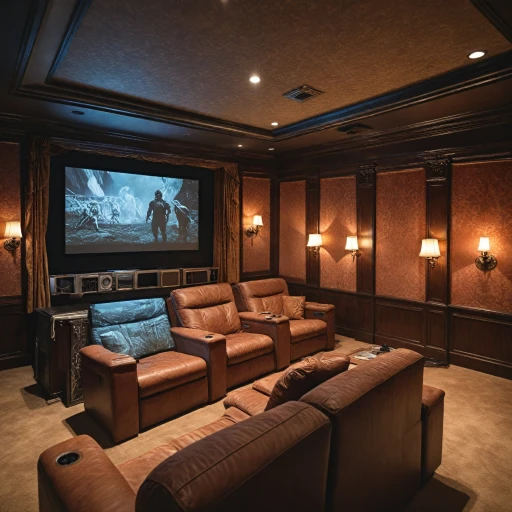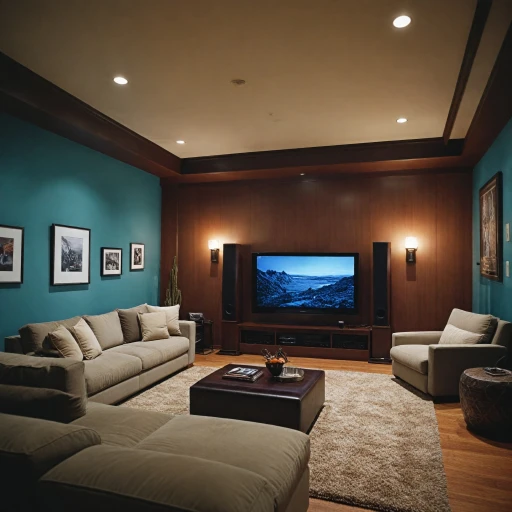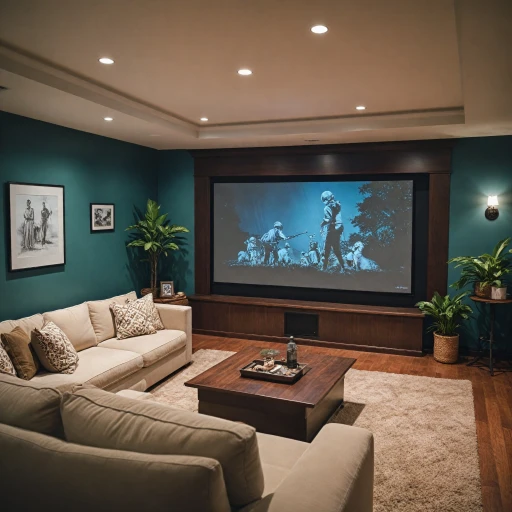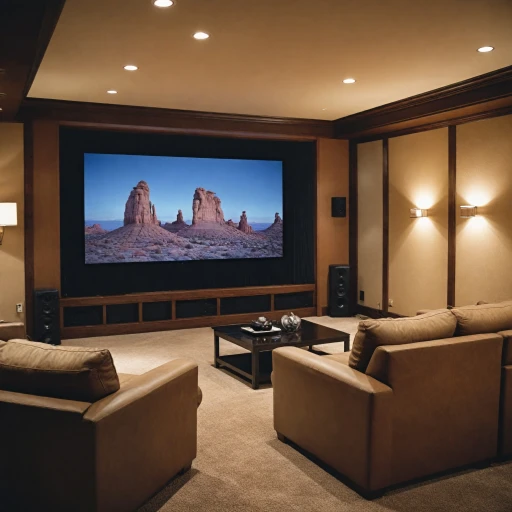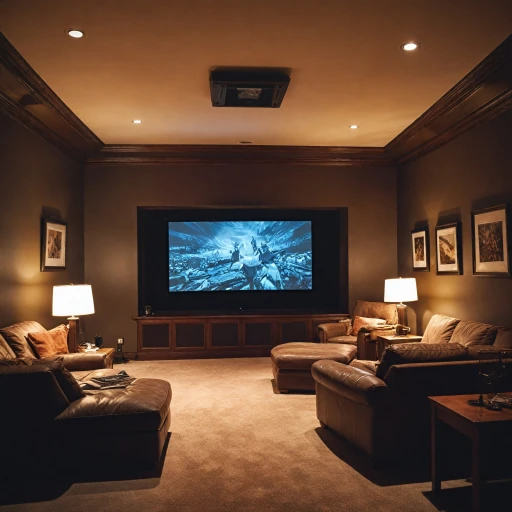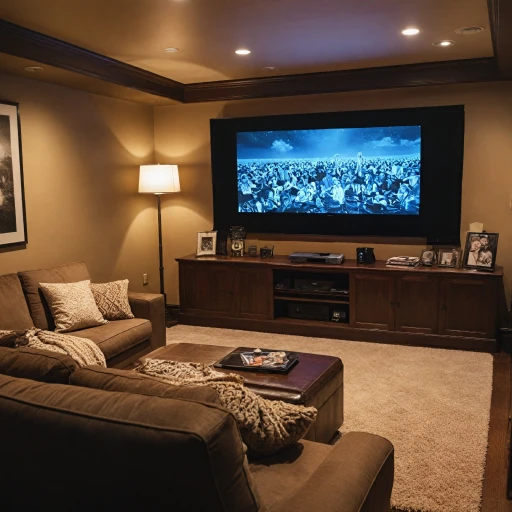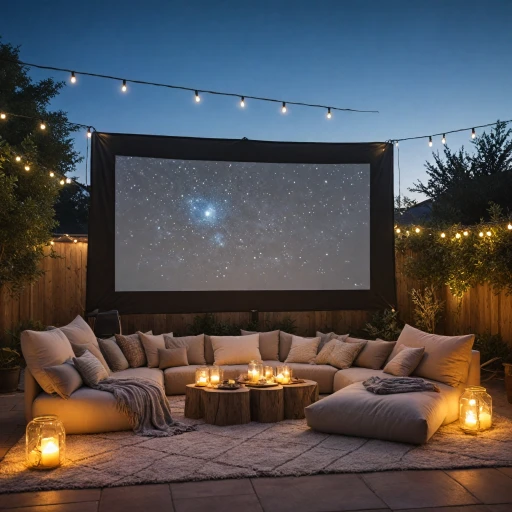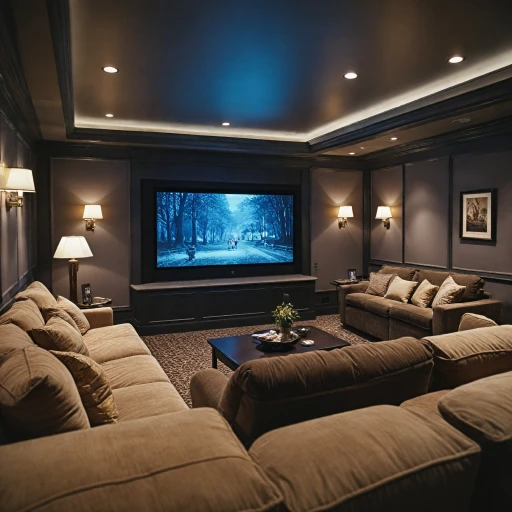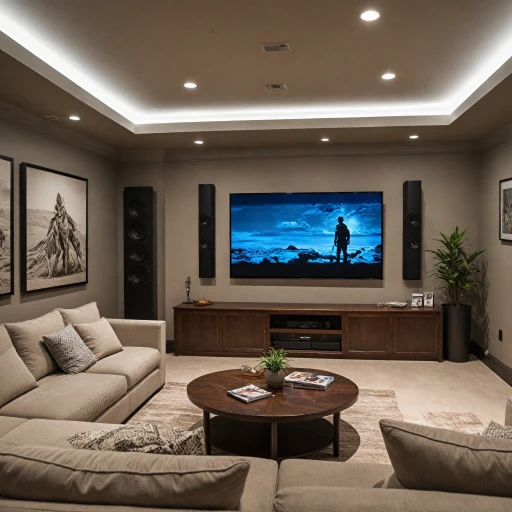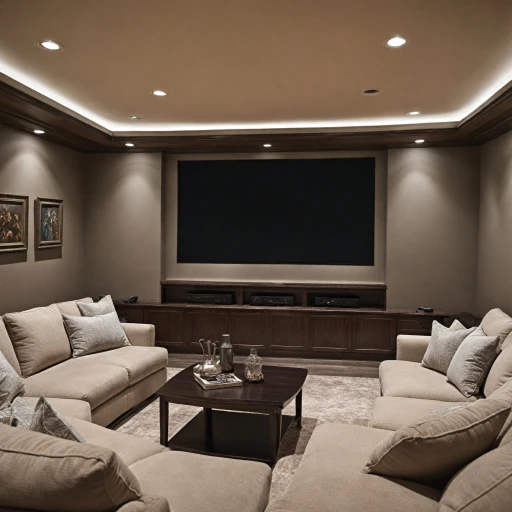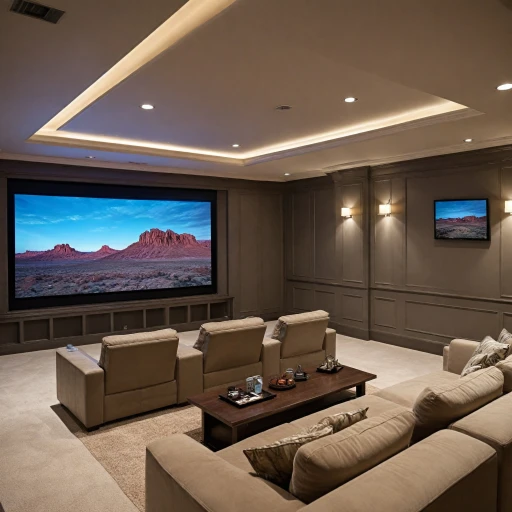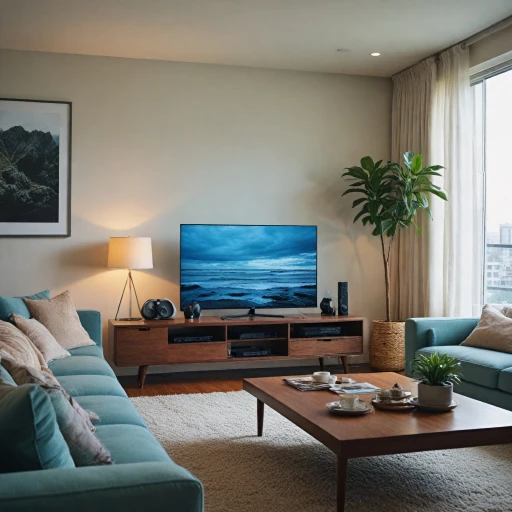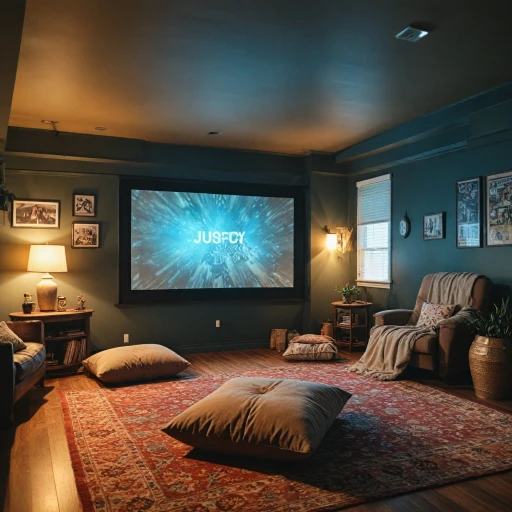
Understanding Projection Screen Sizes
Getting to Grips with Screen Dimensions
When setting up a home theater, understanding the different projection screen sizes is paramount for achieving the best viewing experience. The screen size you choose will influence the image quality and the immersive feel of your theater. The correct size ensures that everyone has a good viewing angle without needing to strain their neck or eyes.
Projection screens come in various sizes, commonly measured diagonally in inches. While smaller spaces might accommodate a 60-inch projector screen, larger rooms could benefit from screens exceeding 100 inches. The screen size has to harmonize with your room's configuration, allowing for comfortable viewing distance and suitable light conditions. A balanced screen size enhances the content's aspect ratio and keeps the images sharp.
Projection screen sizes also depend on the projector's capabilities, as specified by the manufacturer. Choose a screen size compatible with your projector to optimize the projection ratio and light output. Assess the gain factor, which determines how well the screen reflects light, influencing the overall brightness and contrast of the image.
For those considering flexible configurations, such as portable or ultra short throw projectors, understanding the dynamics of screen material and fixed frame screens may offer further customization opportunities. Additionally, if you're dealing with limited space, you might want to explore the benefits of a short throw or rear projection screen. However, securing a mechanical projector screen to a drop ceiling could also be a practical option for some settings, offering a dynamic and versatile viewing solution. To learn more about this installation method, you can check out this guide: securing a mechanical projector screen.
Room Dimensions and Viewing Distance
Room Layout’s Influence on Screen Size Decisions
When setting up a home theater, the room's dimensions and your seating arrangement play pivotal roles in determining the most suitable screen size. The ideal viewing distance impacts how a projection screen is perceived, influencing everything from screen aspect ratios to image quality. Understanding the room's layout can help in choosing the right screen size that conforms to your space limitations and enhances your viewing experience. Larger screen sizes may not be feasible in constrained spaces, while a small screen may not deliver the impact you desire in a more expansive room. Each size projector has its specific requirements concerning projection distance. For optimal results, consider the type of projector you plan to use. Short throw and ultra short throw projectors can project larger images even from closer distances, making them a great fit for smaller rooms. To decide on the ideal screen size, measure the distance from where the screen will be installed to your primary viewing spots. The recommended viewing distance can be roughly calculated as 1.5 to 2.5 times the screen's diagonal. For instance, if you are considering a 100-inch projector screen, viewers should ideally sit around 12 to 15 feet away for the best image quality and viewing angle. To dive deeper into how to optimize your space for an ultimate viewing experience, explore this guide on enhance your viewing experience with a movie screen and projector. This resource offers a comprehensive understanding of using projection screens effectively to complement any room layout.Aspect Ratios and Their Importance
Significance of Aspect Ratios in Projection
In the realm of home theater setups, understanding the role of aspect ratios in projection is pivotal for achieving optimal image quality. Aspect ratio refers to the proportional relationship between the width and height of the screen, which is expressed as a ratio. Common aspect ratios include 16:9 for HD content and 4:3 for older broadcast standards. These ratios determine how the image fills the screen, impacting both the viewing experience and the screen size you ultimately choose. Aspect ratios are crucial because they dictate how content is displayed. For instance, movies are often filmed in wider formats, such as 2.35:1, leading to bars on the top and bottom of a 16:9 screen. Whereas, content intended for 16:9 screens fills the picture perfectly, eliminating any encroaching black bars that can detract from immersion. When selecting a projector, it is essential to ensure that the projector's native aspect ratio aligns with the type of content you primarily consume. This synchronization maintains optimal image quality and prevents distortion. Some projectors offer adjustable aspect ratios, but these adjustments can affect the image's clarity and the screen material's performance, as gain and viewing angle can be impacted. Understanding aspect ratios also helps in choosing the right viewing distance. Different aspect ratios can necessitate a change in how far you sit from the screen to maintain the ideal viewing angle for the best visual experience. For those using short throw or ultra short throw projectors, the aspect ratio compatibility with screen dimension takes significant precedence in ensuring image precision across all angles of the projection. To delve deeper into technical aspects of home theater projectors such as connections and compatibility, explore this comprehensive exploration of DisplayPort to HDMI conversions.Projector Specifications and Compatibility
Projector Specifications: Key to Optimal Viewing
When selecting the right projection screen size for your home theater, understanding your projector's specifications is crucial. The specifications determine how well the projector will work with your chosen screen size and material, ultimately affecting the image quality and viewing experience.
Resolution and Image Quality
The resolution of your projector is a primary factor in determining the clarity and detail of the projected image. Higher resolution projectors, such as 4K or Full HD, provide sharper images, which is especially important for larger screens. Ensure your projector's resolution matches the content you plan to view for the best image quality.
Throw Distance and Screen Size
Throw distance, the distance between the projector and the screen, influences the size of the projected image. Short throw and ultra short throw projectors can project large images from a short distance, making them ideal for smaller rooms. Knowing your room dimensions and viewing distance will help you choose a projector that fits your space.
Brightness and Light Conditions
Projector brightness, measured in lumens, affects how well the image can be seen in different lighting conditions. A higher lumen count is beneficial for rooms with more ambient light. Consider the light conditions of your viewing area when selecting a projector to ensure optimal image quality.
Aspect Ratio Compatibility
Aspect ratio is another critical specification. Most projectors support multiple aspect ratios, such as 16:9 or 4:3. Ensure your projector's aspect ratio aligns with your screen's aspect ratio to avoid image distortion. This compatibility is essential for maintaining the integrity of the projected content.
By understanding these projector specifications, you can make informed decisions that enhance your home theater experience. Whether you're using a fixed frame or portable screen, aligning your projector's capabilities with your screen choice will ensure a seamless and enjoyable viewing experience.
Screen Material and Gain
Choosing Appropriate Screen Material for Optimal Image Quality
When selecting a home theater projector screen, the material plays a pivotal role in determining the image quality you'll experience. The screen material affects the projection of light, ultimately influencing the clarity and brightness of the image. Firstly, consider the gain factor, which measures the screen's ability to reflect light. A screen with a higher gain factor will reflect more light, resulting in a brighter image. This is beneficial in well-lit rooms but could lead to hotspots, where parts of the image appear overly bright. Conversely, a lower gain factor is ideal for rooms with controlled lighting, providing a more uniform image. Types of screen material include matte white, which offers a good balance of brightness and viewing angle, and gray screens, which enhance contrast in brighter environments. For those opting for ultra short throw or rear projection projectors, specialized screens can help reduce the impact of ambient light. Moreover, the type of content you prefer can guide your choice. For instance, cinema enthusiasts might appreciate a screen that enhances contrast, while gamers might prioritize quick response times over colors. Remember, matching the screen material with your projector's specifications, like its light output and resolution, can maximize your home theater experience. When available, free samples of screen materials can be an effective way to gauge their performance in your intended viewing environment. Ultimately, the key is to ensure compatibility between your projector and the screen, considering variables such as projector type (like short throw or portable), room conditions, and personal preferences, to achieve the ideal balance of quality and practicality.Budget Considerations and Recommendations
Financial Plausibility: Balancing Costs vs. Quality
Selecting the right projection screen for your home theater involves juggling various factors, with budget being a crucial consideration. A screen's price can vary significantly based on material, size, and additional features. Here's what you need to keep in mind when factoring in costs without compromising on the viewing quality:- Screen Size and Type: Larger screens, fixed frame screens, and specialized portable screens usually command a higher price. If you have a limited budget, consider downsizing or opting for a pull-down screen.
- Material and Gain: The type of screen material impacts image brightness and quality. Gain factor influences how much light is reflected, affecting viewing in various lighting conditions. While high-gain screens may improve image brightness in less-than-ideal lighting, they also tend to be more expensive.
- Projector Compatibility: Ensure that your screen is compatible with your projector's specifications. This way, you do not end up investing in a screen that cannot fully utilize the projection capabilities of your short throw or ultra-short throw projectors.
- Aspect Ratios: Consider projection screen options that align with the aspect ratio of your projector to optimize the viewing experience without overextending your budget.

